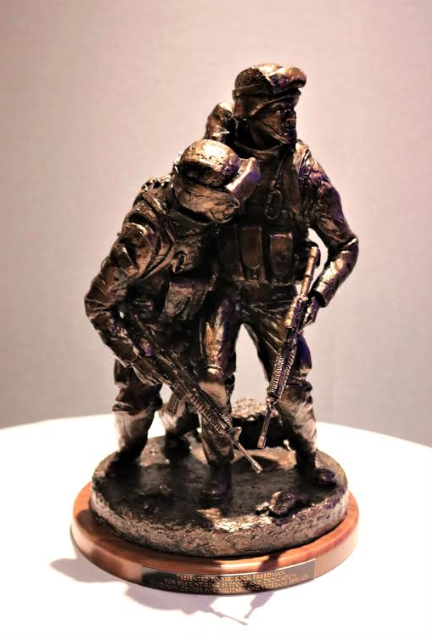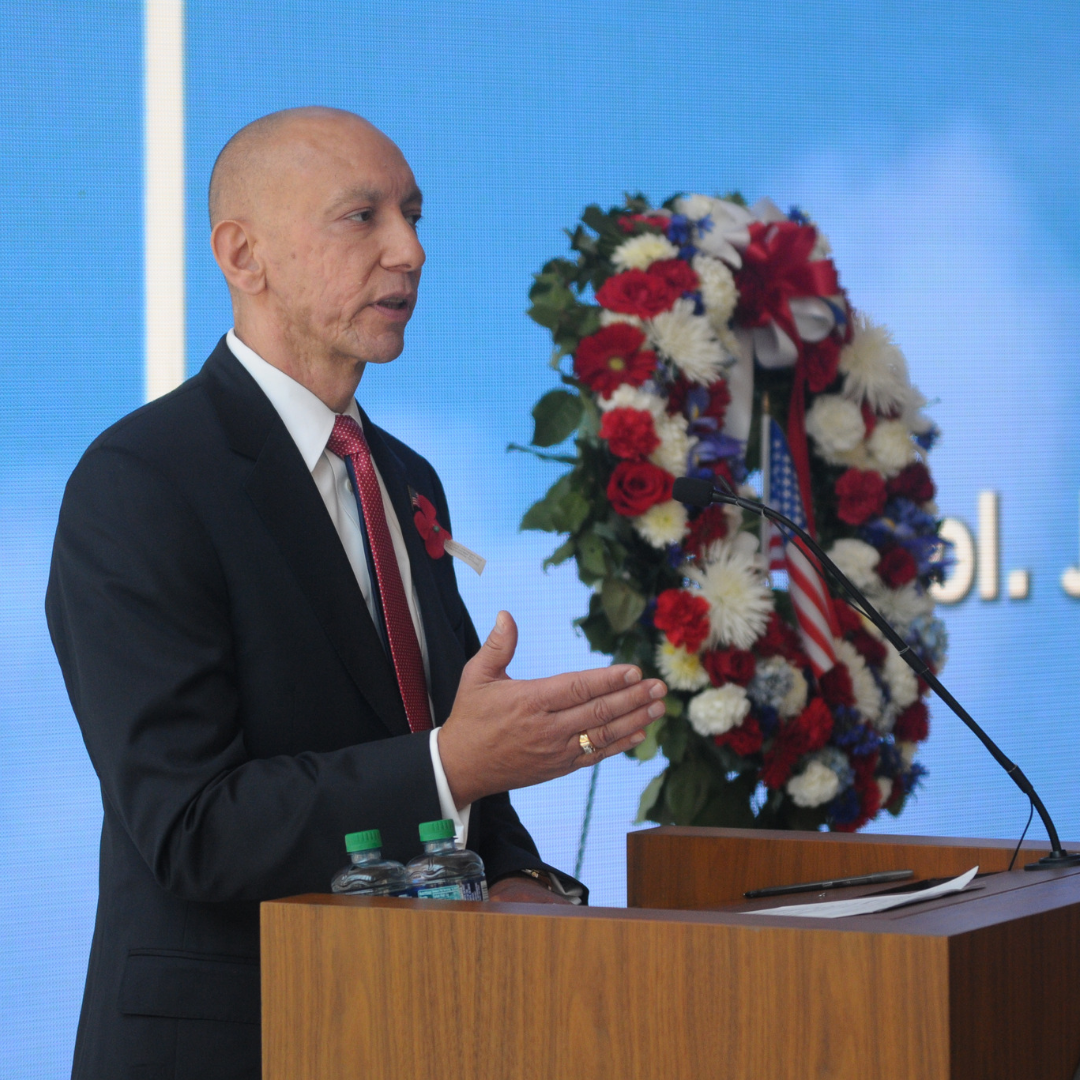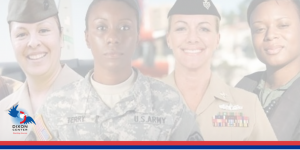Prepping Vets for Jobs – Before They Leave the Military
 Even with record-low unemployment, it’s a myth that service members who get out of the military will find employment right away.
Even with record-low unemployment, it’s a myth that service members who get out of the military will find employment right away.
That’s where the Teamsters Military Assistance Program (TMAP) comes in. TMAP has been engaged in the transition of military soldiers into civilian sector careers since 2008.
What differentiates this program from others is its close cooperation with the Armed Forces, particularly the Army’s Soldier for Life Program, to develop a defined pathway toward employment in advance of a service member leaving the military. This allows a newly-minted veteran and successful TMAP program graduate the opportunity to secure a private sector job before he/she leaves the military.
The Teamsters, who represent hundreds of professions and thousands of contracted employers requiring state credentials, are also working with state lawmakers to recognize the certifications and credentials those transitioning into the civilian sector have earned while on active-duty.
 Michael “Mick” Yauger, National Director of TMAP, is a passionate advocate for veterans and military families. He recently sat down to talk about TMAP and how other organizations might expand this model.
Michael “Mick” Yauger, National Director of TMAP, is a passionate advocate for veterans and military families. He recently sat down to talk about TMAP and how other organizations might expand this model.
What do you see as the biggest impediments to employment when a service member gets out?
Employers recognize a college degree as verifiable proof of knowledge. But they don’t recognize a DD214 [military discharge papers specifying experience] as proof that you know what you’re doing. This is especially important with credentialing. Think about all the professions that require a credential – truck drivers, fire fighters, pilots, auto mechanics. So many of those in these industries get their experience in the military.
I’m not saying that because you drove a truck for the military it should automatically qualify you for certification, but it should count for something and it shouldn’t be an impediment to successfully transitioning from the military to the civilian workforce.
Since the inception of TMAP, and due to partnering efforts specific to CDL licensure, the nation now recognizes transitioning service men and women who hold a military CDL license. Some states offer an even exchange of the license; in others, it is a waiver. We hope to soon see more credentials recognized by state regulators and credentialing entities. For example, we are now exploring an even exchange for pilots and licensed mechanics as well as reciprocity for nurses and teachers.
What differentiates TMAP from similar programs?
First off, this is a program that starts before the service member exits the military. We provide We recruit and train right where they’re stationed. Next, if candidates pass our program – and it’s not automatic, you have to work for it – they are now extremely competitive for a job at the location of their choosing. Now they have a defined pathway to more than just a job, but to a meaningful career.We’ve also updated our program to add military spouses.
Why does this program work?
This program specifically works with companies that not only provide good wages and great benefits, they go beyond by offering a career ladder – promoting from within.
There are certain companies that truly understand what service members bring to the table.For instance, Tim Thorne, CEO of ABF Freight, who served as an infantry officer started his career out on the docks with ABF. His understanding of vets goes beyond what they did in combat. In fact, that’s just a small part of their career skills. For Tim, it’s about what military members are taught: Work as a team. Never leave a buddy behind. Stay drug- and crime-free. That’s the kind of employee that every employer wants but is increasingly impossible to find, and Tim puts them on the front-line, working face-to-face with his clients.
Last thoughts…any anecdotes that made you sit up and think, “This is working, we are doing a good job.”?
As a Vietnam veteran, I am proud to sit at the table and offer resources to our younger service members as they return home. I’ve never slept better than the time I had a young kid come up, tell me I recruited him for TMAP and now he just got his first home. That’s what I’m most proud of. Less than one percent of the population has the smarts, desire, sense of honor, strength and responsibility to wear the uniform. And I intend to do my best until my last breath to make sure that these folks succeed.

 This column original ran on InsideSources.com on December 26, 2018.
This column original ran on InsideSources.com on December 26, 2018.  Last night Dixon Center was honored to recognize two people pivotal to our organization’s success through the presentation of the first annual Herbert Metzger Service Award, named for Herbert R. (Herb) Metzger (June 9, 1923 -October 7, 2013).
Last night Dixon Center was honored to recognize two people pivotal to our organization’s success through the presentation of the first annual Herbert Metzger Service Award, named for Herbert R. (Herb) Metzger (June 9, 1923 -October 7, 2013).

 Thanksgiving is a very meaningful day for the Dixon Center for Military and Veterans Services family. Having spent several Thanksgivings in a combat zone in Iraq, I am grateful for every day I have with my family, both at home and at work. It’s also important for me to thank my fellow veterans, nearly 20 million strong, who have proudly served our country.
Thanksgiving is a very meaningful day for the Dixon Center for Military and Veterans Services family. Having spent several Thanksgivings in a combat zone in Iraq, I am grateful for every day I have with my family, both at home and at work. It’s also important for me to thank my fellow veterans, nearly 20 million strong, who have proudly served our country. With an estimated 240,000 service members separating from military service each year, according to the Department of Defense1, American employers are faced with the challenge and desire to cultivate the talents of these capable men and women. Now is a critical time for American collaboration in reintegration programming like workforce development.
With an estimated 240,000 service members separating from military service each year, according to the Department of Defense1, American employers are faced with the challenge and desire to cultivate the talents of these capable men and women. Now is a critical time for American collaboration in reintegration programming like workforce development.
 Veterans Day is a very special day in my family. We take time to remember the men and women with whom I have served, many of whom have eaten dinner with us, played with the kids and crashed on our couch. In the military, everyone is family.
Veterans Day is a very special day in my family. We take time to remember the men and women with whom I have served, many of whom have eaten dinner with us, played with the kids and crashed on our couch. In the military, everyone is family. Why Dixon Center?
Why Dixon Center?
 One of the most critical times for military service members is the reintegration from active service to veteran status. The transition from the military to a civilian career can be particularly challenging. That’s why Dixon Center puts an emphasis on Workforce Development for these transitioning veterans, as well as their spouses struggling to find stable employment through deployments and changes of station.
One of the most critical times for military service members is the reintegration from active service to veteran status. The transition from the military to a civilian career can be particularly challenging. That’s why Dixon Center puts an emphasis on Workforce Development for these transitioning veterans, as well as their spouses struggling to find stable employment through deployments and changes of station. Army Sergeant Tiffany, Chicago
Army Sergeant Tiffany, Chicago
 How long have you been with Dixon Center?
How long have you been with Dixon Center?
